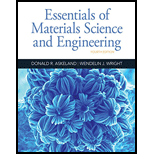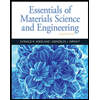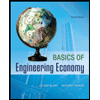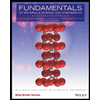
(a)
Interpretation:
The volume fraction of silicon carbide for given grinding wheel should be calculated.
Concept introduction:
According to the rules of mixtures for particulate composites:
Where
Volume fraction is defined as:
Answer to Problem 17.18P
The volume fraction of silicon carbide is
Explanation of Solution
Given information:
Diameter of grinding wheel =
Thickness of grinding wheel =
Weight of grinding wheel =
Density of silicon carbide =
Wheel is
Cubes of silicon carbide =
Based on given information:
Applying rule of mixing,
Calculation of volume fraction of wheel with the use of porosity:
Let the volume of grinding wheel be V:
Calculation of density using weight of grinding wheel and volume of grinding wheel
Conversion of lb/cm3 to g/cm3:
The density of grinding wheel is
Applying rule of mixing from equation (1):
The value of volume fraction of silicon carbide and silica glass is unknown.
From the rule of mixing,
Substituting the volume fraction of silica glass in terms of volume fraction of silicon carbide and porosity:
The value of volume fraction of silicon carbide =
(b)
Interpretation:
The number of particles of silicon carbide lost by wheel when diameter is worn to 8 inch should be calculated
Concept introduction:
Volume fraction is defined as the ratio of volume of specified component to the sum of total volume of components.
Volume of cubic particle is defined as:
Answer to Problem 17.18P
The number of particles of silicon carbide =
Explanation of Solution
Given information:
Diameter of grinding wheel =
Thickness of grinding wheel =
Weight of grinding wheel =
Density of silicon carbide =
Density of silicon glass =
Wheel is
Cubes of silicon carbide =
Number of particles per cubic centimeter is defined as the ratio of number of silicon carbide particle to volume of silicon carbide particle:
Volume of silicon carbide particle =
Calculation of initial volume of particle:
Calculation of final volume of particle:
Volume of silicon carbide =
For cubic particle of 0.04 cubes of silicon carbide:
Number of silica particle lost is defined as,
For 1 cubic centimeter of particle of silicon carbide:
Number of silicon carbide particle per cubic centimeter =
The number of silicon carbide lost particle =
Want to see more full solutions like this?
Chapter 17 Solutions
Essentials Of Materials Science And Engineering
 MATLAB: An Introduction with ApplicationsEngineeringISBN:9781119256830Author:Amos GilatPublisher:John Wiley & Sons Inc
MATLAB: An Introduction with ApplicationsEngineeringISBN:9781119256830Author:Amos GilatPublisher:John Wiley & Sons Inc Essentials Of Materials Science And EngineeringEngineeringISBN:9781337385497Author:WRIGHT, Wendelin J.Publisher:Cengage,
Essentials Of Materials Science And EngineeringEngineeringISBN:9781337385497Author:WRIGHT, Wendelin J.Publisher:Cengage, Industrial Motor ControlEngineeringISBN:9781133691808Author:Stephen HermanPublisher:Cengage Learning
Industrial Motor ControlEngineeringISBN:9781133691808Author:Stephen HermanPublisher:Cengage Learning Basics Of Engineering EconomyEngineeringISBN:9780073376356Author:Leland Blank, Anthony TarquinPublisher:MCGRAW-HILL HIGHER EDUCATION
Basics Of Engineering EconomyEngineeringISBN:9780073376356Author:Leland Blank, Anthony TarquinPublisher:MCGRAW-HILL HIGHER EDUCATION Structural Steel Design (6th Edition)EngineeringISBN:9780134589657Author:Jack C. McCormac, Stephen F. CsernakPublisher:PEARSON
Structural Steel Design (6th Edition)EngineeringISBN:9780134589657Author:Jack C. McCormac, Stephen F. CsernakPublisher:PEARSON Fundamentals of Materials Science and Engineering...EngineeringISBN:9781119175483Author:William D. Callister Jr., David G. RethwischPublisher:WILEY
Fundamentals of Materials Science and Engineering...EngineeringISBN:9781119175483Author:William D. Callister Jr., David G. RethwischPublisher:WILEY





